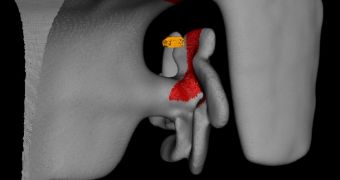Investigating the hull of military ships in search for mines that may be attached to it is a risky business, one that involves the use of either divers or trained dolphins and sea lions. Now, a team of experts announces that it managed to create an autonomous underwater system for this job.
The US Navy has been working towards obtaining this capability for many years, but thus far to no avail. It was only through the persistence of scientists at the Cambridge-based Massachusetts Institute of Technology (MIT) that this was recently made possible.
Minesweeping robots need to be engineered so that they exhibit great resiliency during risky underwater operations. They must also display a great degree of autonomy, and the ability to function in different aquatic environments without any prior data on those environments.
In addition to all these aspects, they must also be able to detect a mine that may be the size of an iPod. What the MIT team did was create a set of algorithms that control the navigation and feature-detecting capabilities of Autonomous Underwater Vehicles (AUV).
The algorithms were developed by MIT Department of Mechanical Engineering Finmeccanica Career Development assistant professor Franz Hover, who worked together with graduate student Brendan Enblot for creating a survey system that can detect mines only 10 centimeters (3.9 inches) across.
With the new software, AUV can now move underneath ships and create complex views of their hulls, propellers, rudders and other geometrically complex components. The US Navy can employ such autonomous robots on the most critical American ships.
“A mine this small may not sink the vessel or cause loss of life, but if it bends the shaft, or damages the bearing, you still have a big problem. The ability to ensure that the bottom of the boat doesn’t have a mine attached to it is really critical to vessel security today,” Hover explains.
Details of the new investigation appear in the latest issue of the esteemed International Journal of Robotics Research. The video embedded below demonstrates how an AUV sporting the new algorithms operates underwater.
With support from the Office of Naval Research, the MIT group now plans to improve their scouting technique, by developing a set of algorithms that will enable AUV to move just as fast and precise as human divers, and conduct studies at much higher resolutions.
“It’s not enough to just view [the ship hull] from a safe distance. The [AUV] has to go in and fly through the propellers and the rudders, trying to sweep everything, usually with short-range sensors that have a limited field of view,” Hover concludes.

 14 DAY TRIAL //
14 DAY TRIAL //